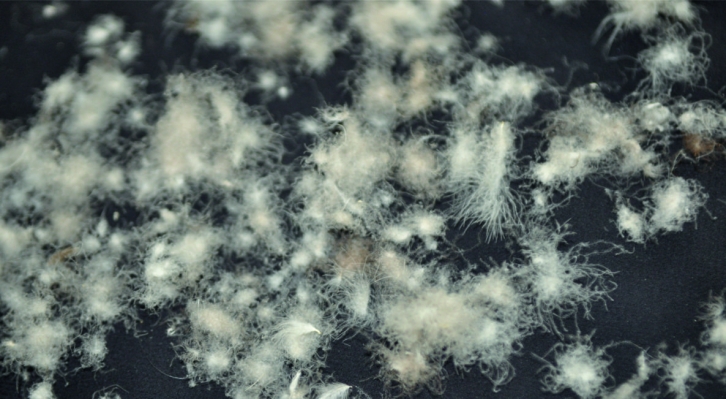ABOUT OUR DOWN
Where does it come from?
Poland. We have a single, wholly Polish supplier. We only use Polish goose down because we can guarantee the integrity of the means of its collection and the quality of the fill power.
What down qualities do we use?
We use two different qualities which are defined by the fill-power; in other words, how much volume a given quantity of down will occupy. The number is expressed in cubic inches (a quaint throwback to imperial days) and the bigger the number, the better. (You can read more about this on the page UNDERSTANDING DOWN).
Torpedo range 850 c.i. EU (915 c.i. US)
Heatray range 800 c.i. EU (860 c.i. US)
Radioactive range 850 c.i. EU (915 c.i. US)
There is no scientific means of measuring the down/feather ratio other than it being manually inspected and separated. In our opinion, it's not an important figure. It is considered that 3-5% of small feathers is necessary to give the down some "body". Higher feather ratios (greater than 7%, say) means there is an increased risk of feather stalks extruding through the lining or shell fabrics. Our down is in the 93/7 to 95/5 range by default - you simply will not get a super high fill-power rating if you have too high a percentage of small feathers.
Is it ethically recovered?
Yes. Poland bans both live-plucking and force-feeding practices, the two main areas of ethical concerns. Our supplier is a producer of goose-meat, their major export market being Germany. They have a vertical operation, which means they have complete control over the breeding, raising and killing processes of geese, all of which is in Poland. Down is a very valuable by-product of their business. None of our down comes from live plucking or “harvesting” (read about this further on).
Do we use a Down Codex?
No, we don’t need to. As we buy our down from a single, fully verifiable source, we don’t need to employ any such system. This is only necessary for large brands purchasing down from many suppliers in different countries.
Do we use hydrophobic-treated down?
No, it isn’t necessary for three reasons. First, nearly all of crux down products have waterproof, or at the very least, water-resistant shells. Our philosophy is to keep the down dry at the outset.
Secondly, down comes from water-fowl and has natural hydrophobic qualities. In the quest for ever-higher fill-power ratings, a lot of these properties are stripped out in the cleaning processes that follow plucking. It is ironic that hydrophobicity has to be added back in.
Finally, once you have water in your insulating layer, you are wet/damp, and heat loss through conduction - which is far worse than via convection - becomes the issue. Stay dry.
Want to know more?
There is a lot that can be written about down, and for general background information, you can read more about everything on the page UNDERSTANDING DOWN.

